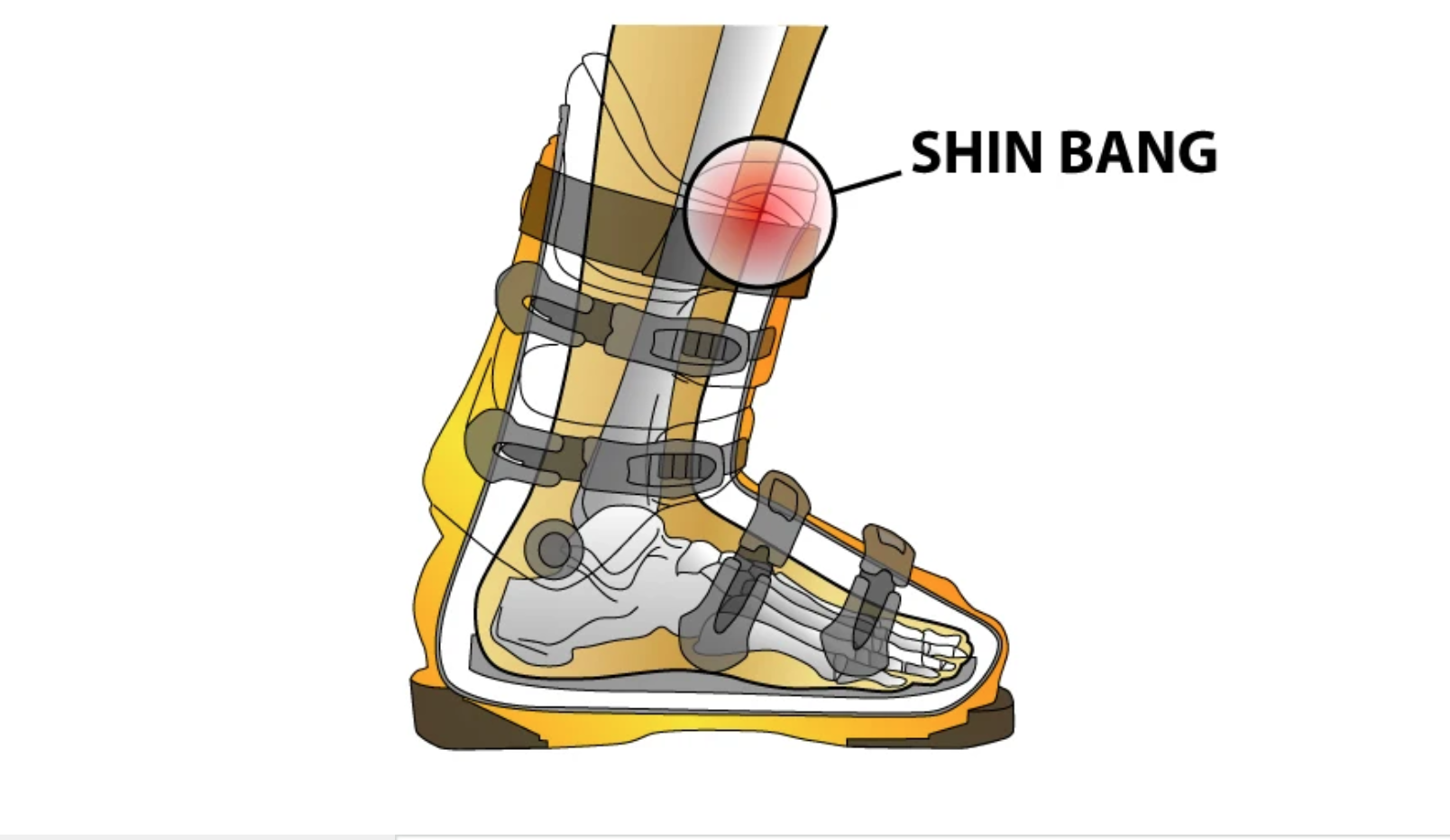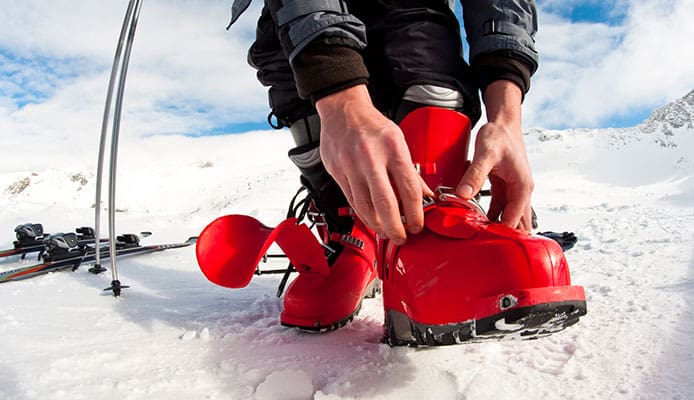
Too benign to seek professional treatment for, and too painful not to complain about—everybody hates shin bang.
You know, shin bang—that horrid, painful sensation on your shinbone that you get from your boot after skiing hard? Yes, you do.
Although die-hard ski racers in 1 million flex alpine race boots that they can barely walk in might tell you otherwise, shin bang is a real force to reckon with on (and off) the mountain every ski season. And there’s a science behind it.
That’s why SnowBrains reached out to Orthopedic surgeon Dr. William H. Montgomery, III, MD with the Dignity Health Medical Foundation in San Francisco, Calif. to find out what the heck is going on in our ski boots that make our shins hurt so damn bad sometimes, especially after we get new boots.

So what exactly is shin bang, and what causes it?
According to Dr. Montgomery (who is an avid skier and has had BAD shin bang before), shin bang is a type of contusion on your tibia’s periosteum, which is “like saran wrap that wraps around your bone, and is really super sensitive,” he said in a phone interview. Most of the time, this contusion to your periosteum is caused by your shin consistently slamming against the top part of your ski boot due to the very small gap that often exists between your shin and your boot liner.
And it freaking hurts.
After sharing his personal experiences with shin bang and describing the medical language associated with it, Dr. Montgomery outlined potential treatments for shin bang. He said that
“prevention is the cure but the treatment is different,”
meaning that the best way to treat shin bang is to avoid it entirely by having the best possible fit for your ski boots. The solution? Going to an experienced boot fitter and purchasing custom liners.
A good boot fitter will mold custom ski boot liners to the contour of your feet and shins, eliminating any potential gap between the liner and your shin that could cause shin bang. Think Intuition Liners. Dr. Montgomery also said that you should put a kind of gel or cork pad—or even a piece of a foam beer koozie—in between your liner and your leg to provide a soft cushion for your already miserable shin.
If it’s too late and you are already experiencing full-on shin bang, even with a good fitting boot (which can still happen as a result of charging hard), then icing, ibuprofen, and rest are likely your best bets.
“There is absolutely nothing more miserable than having painful feet and legs when your skiing. It absolutely stinks,” Dr. Montgomery said. “You need a good boot fitter!”
Shin bang is not sorcery, it’s science. Keep your shins safe this season!

Boot fitting is a good value.
When I was much younger there were not any ‘boot fitters’ other than the tennis-racket stringer who needed work during winter months. I would purchase cheaper boots and accept the associated pain that just went along with skiing as the popular wisdom of the era stated. Every time I skied I would think to myself that I would pay $10 for my feet to not hurt now (at ~$2.00 per hour, that was just about my take-home pay for a short shift).
In the mid 70s I found a guy who offered to punch out my boots to accommodate my unevenly wide foot but it could only be done on the upper end boots, which were the new molded plastic boots (as opposed to cheaper sewn plastic laminate or leather boots). I figured that paying for the top line boots was actually a wise choice since, at the promised $10 per day no-pain fee, the boots paid for themselves after 25 days.
These days I tighten my boots before 9:00 AM and don’t loosen them until long after last chair. No pain during the day but it still does feel great to take those things off.
The best way to prevent shin bang is to use Booster Straps.
Used them for the first time last season and no shin bang!
Used them for the first time last season?
Bwahahaha
Dude ‘power straps have been around for like 30 yrs
My old buddy and co-worker bootfitter Cosmo of Cosmo’s custom webbing and bootfitting invented and custom made the first ever 2” velcro straps for boots. I still use them on new boots as they are the bomb.
And shin bang??? Hah!! get a clue peeps
Learn how to ski proper and you might not have such issues.